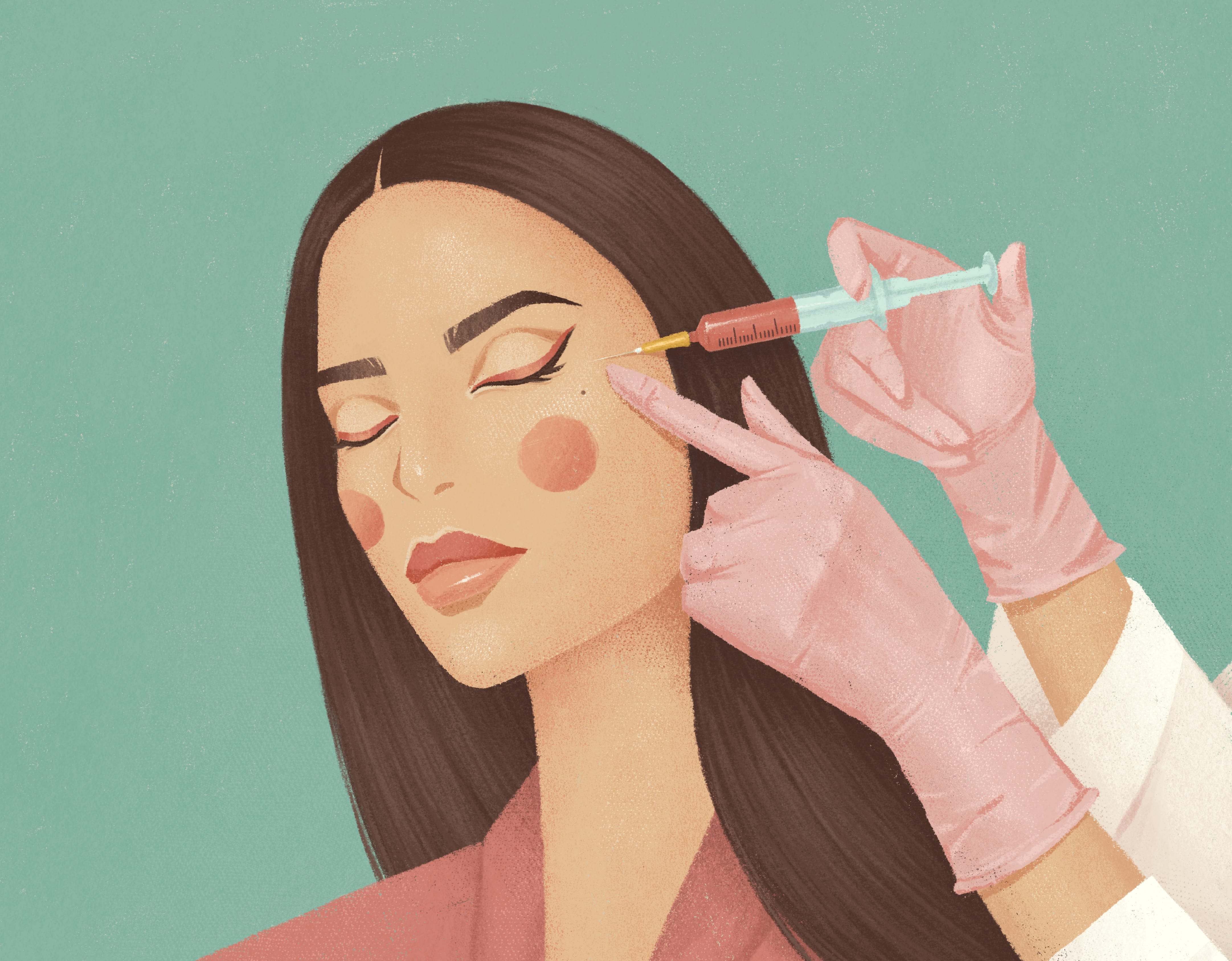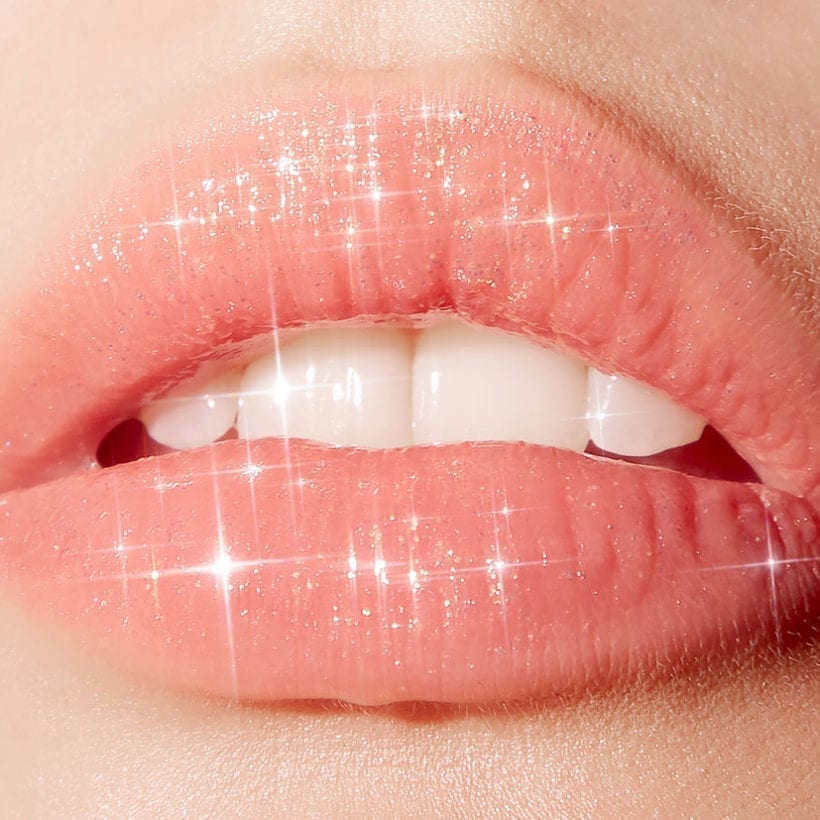For months, I chalked up my exhaustion and tense jaw muscles to typical mom-sleepiness, paired with the anxiety and chronic pain condition that tends to leave me pretty tightly wound up. Having previously never had any jaw issues my husband mentioned one day I had been grinding my teeth in my sleep, and that the noise was pretty alarming. I started to monitor it more and more, bought an over-the-counter night guard and thought it would get better. It didn’t.
It wasn’t until I woke up one morning unable to move my mouth that I realized something was really wrong. One emergency trip to the dentist later, I was told I have bruxism and TMJ (temporomandibular joint dysfunction). The dentist treated me with muscle relaxers, pain medication, a prescription mouthwash for the infected sore my grinding caused (yep), and two recommendations — a professionally-made night guard (See ya…$600!) and also jaw Botox or Dysport. My initial reaction to his recommendation? Painfully and through my immobile jaw, I laughed.
As a beauty and lifestyle writer, of course, I was familiar with Botox, Dysport and other neurotoxins. I had written about them in the past, learned all about the mechanisms in which they work, and had seen firsthand the powerful results they can give. I have been offered treatments — but always declined. Even though I had always wanted to try it, I couldn’t work up the nerve. But now…? Doctor’s orders, right?!
I was so hesitant to make any decisions until things kept getting worse. Within a few months, I needed to have my back tooth extracted and a bone graft put in thanks to something called dental root resorption, which is caused by tooth trauma (in this case, my grinding.) That was not fun.
So, I finally reached out to my trusty source for everything dermatology, Dr. Joshua Zeichner, an NYC board-certified dermatologist, for his thoughts. He strongly recommended neurotoxin treatment for me. So, I popped in for a visit. We spent some time talking about how Dysport, the neurotoxin I chose to have injected, can help me, where he will inject it, what to expect, and how to maintain the results.

How can Dysport help TMJ?
Dr. Zeichner explained that Dysport is a neuromodulator that blocks our nerves from signaling muscles to contract in treated areas. While currently, it is FDA approved for the treatment of facial expression lines between the eyebrows, doctors can also use neuromodulators like Dysport “off-label” to treat a variety of other conditions — like my TMJ. He explains, “This means that we use them, and they work, even though they are not specifically approved by the FDA.” Because TMJ is caused by overactivity of the masseter muscles (the muscles at the angle of the jaw that help us chew), Dr. Zeichner says that “injection of neuromodulators like Dysport into that area can help relax the muscle and improve TMJ symptoms. Treating the masseter muscles also can give a slimming effect to the lower face for an improved cosmetic appearance of the face. It also is useful in people who grind their teeth.”
Better symptoms, less grinding, and a slimmer face? I was sold.
As for side effects, Dysport carries the same boxed warning as other botulinum toxins, to “bring attention to the fact that these products have the potential to spread from the injection site to other parts of the body, resulting in serious life-threatening risks, including difficulty talking, swallowing or breathing; muscle weakness; drooping eyelids; and blurred or double vision.”

The manufacturer states that some of the most common side effects include nose and throat irritation, headache, injection site pain and skin reaction, upper respiratory infection, eyelid swelling or drooping, sinus inflammation and nausea. It sounds kind of scary and overwhelming, so I knew the importance of going to a trusted, highly skilled provider.
How it all went down
I had built it up in my head to be SO much worse than it actually was. It really wasn’t bad, at all.
First, Dr. Z’s assistant applied numbing cream all over my face and let it sit for a bit. Then, it was go time.

Dr. Z had me mimic biting and opening so he could target my masseter muscles, and he injected Dysport into the key areas. It was just a pinch, and I barely felt anything at all!
Once my jaw was treated, there were some units left in the vial. So, he generously asked, “anywhere else?”
Well ::exhales::. When in Rome! (Or rather, when in the Upper East Side!)
I explained how I was beginning to feel insecure about my forehead lines as I got older (I’m 34 and have a very expressive face) and he reassuringly replied, “no problem!” A few more pinches, and my forehead lines and “elevens” (the lines between your eyebrows) were Dysport-ed up, too.
I had officially joined the club.
Results
A few minutes of injections for months of relief? Yes, please.
While the effects of Dysport injections take about 1-2 weeks to fully sit in, they typically last about 5 months. Depending on the patient, Dr. Zeichner says, “Anywhere between 45 and 90 units of Dysport may be used (I used 60.) In some cases, higher concentrations may be necessary for people with large, overactive muscles.”

I have zero patience but was really excited to see and feel the results of treatment. First, I just had to get through my one and only side effect – a pretty gnarly headache that lasted about 36 hours following treatment. Over the next few weeks, I began to feel a release of my jaw.
Now, one month later — my grinding is markedly improved, and so is my range of motion! My jaw is clicking less, I’m sleeping better and I noticed a bit of a change in my jawline shape, too.
As for my forehead lines, I’m SUPER happy with those results, too. I don’t look frozen or like “I had work done”, but I really feel like I look a bit more refreshed, and smooth. I now consider myself a proud member of the Dysport club, and can’t wait to continue to see Dr. Z help achieve both my medical and cosmetic goals in the future.
Thinking about it?
If you’re considering getting botulinum toxin injections for medical or cosmetic reasons, there are a few important steps to take. First, do your research! Make sure you are comfortable and understand how the process works.
Then, find a trusted, reliable provider like a dermatologist, plastic surgeon, or certified aesthetic nurse injector so you can feel secure in knowing you’re in highly skilled hands. Also, at your consult ask how many units you think will be needed. This directly impacts the price. Though pricing varies depending on the area you live in and what exactly you are having done, for me, Dr. Zeichner says on average it costs somewhere between $500 and $750.







